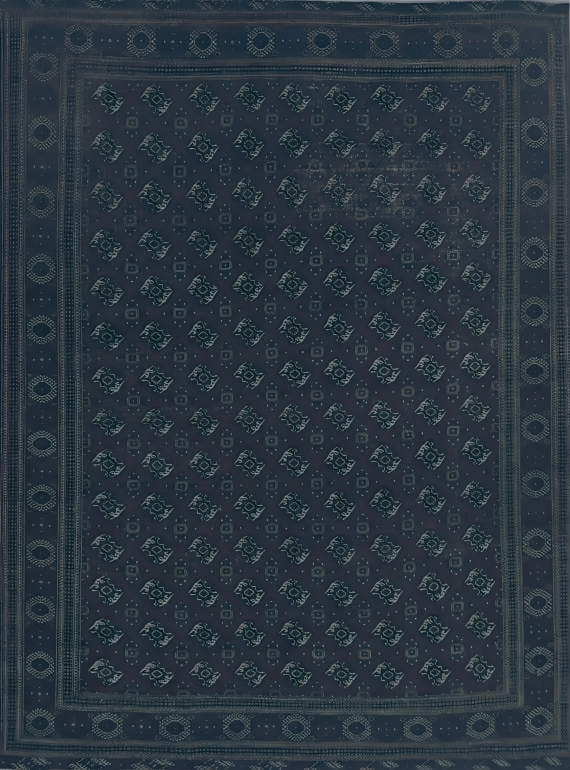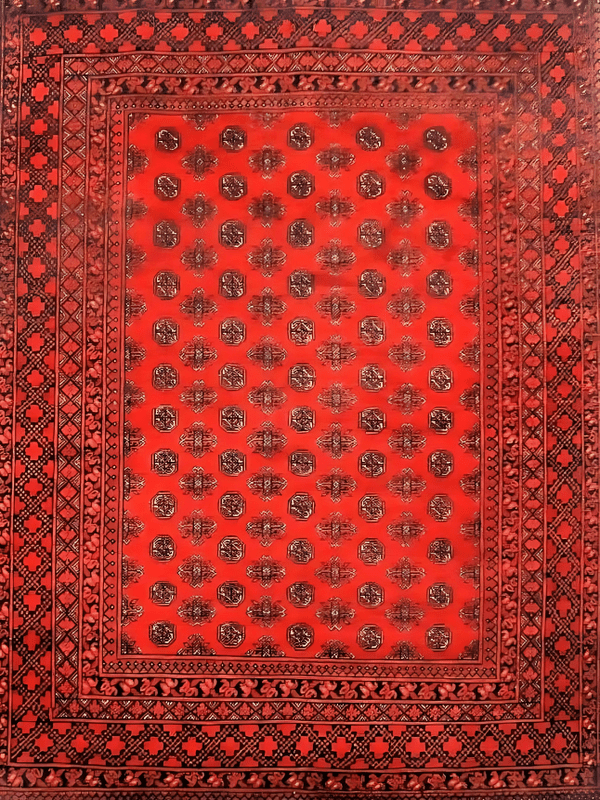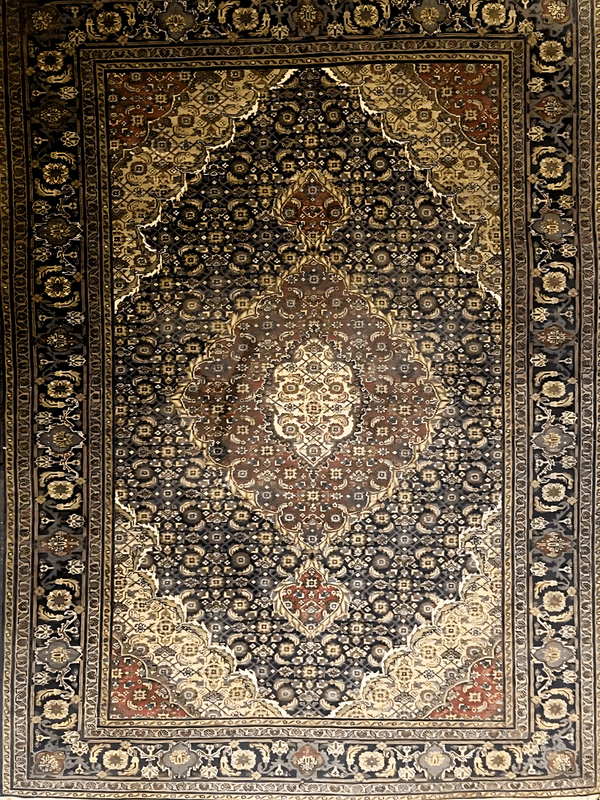Hand-Knotted Carpets of Pakistan
Hand-Knotted Carpets of Pakistan - A Timeless Tradition
Hand-knotted carpets of Pakistan represent an unparalleled tradition of artistic excellence, blending cultural history with intricate craftsmanship. These carpets, made with painstaking precision, are admired worldwide for their luxurious textures, detailed patterns, and vibrant color palettes.
Introduction to the Art of Carpet Weaving
Originating from centuries-old weaving techniques, each carpet tells a unique story, making it a treasured masterpiece. These carpets are renowned worldwide for their intricate patterns, luxurious textures, and exceptional durability. Passed down through generations, the art of carpet weaving in Pakistan continues to thrive as a symbol of skill and dedication.

Hand-Knotted Carpets of Pakistan - Types of Hand-Knotted Carpets
This is a very vast subject as the types vary from region to region and depict the cultures prevalent in those regions. Nevertheless, here we are listing down some of the very famous styles and motifs of this exciting segment of craft of our country.
Bokhara Carpets
As the name suggests, these carpets are influenced by the motifs from Bokhara and the Central Asian countries that came to the Indian sub-continent. Although the name has become a name that identifies its various styles.
- Jaldar Bokhara: A regional variant of the iconic Bokhara design, featuring repeating octagonal gul motifs. Known for its soft, velvety feel, it often uses deep reds, maroons, and ivory tones.
- Tekke Bokhara: Inspired by the Tekke tribe of Turkmenistan, these carpets use finer detailing, often in warm reds and earthy tones.
- Ashkali Bokhara: Incorporates larger, more geometric gul designs for a bolder aesthetic. The Ashkali carpet features a geometric design commonly found on rugs from the Shekarlu subtribe of the Qashqai people in Persia.
 Jaldar Bokhara
Jaldar Bokhara Tekke Bokhara
Tekke Bokhara Bokhara Carpet
Bokhara CarpetMedallion Ziegler Carpets
Medallion carpets feature a large central medallion motif, surrounded by detailed floral or geometric borders. Medallion carpets are versatile, with variations such as:
- Single Medallion: A central motif dominates the design, often with intricate floral details.
- Double Medallion: A pair of medallions divides the field, offering a balanced and symmetrical look.
Ziegler carpets, often softer in tone, feature larger-scale designs, including floral and vine motifs. Their muted color palettes make them popular for modern interiors.
 Medallion Carpet
Medallion Carpet Double Medaillon Carpet
Double Medaillon Carpet Ziegler Carpet
Ziegler CarpetShikargah Carpets
Depicting hunting scenes (shikargah) with animals, trees, and nature-inspired motifs, these carpets are a visual narrative. They are known for their detailed craftsmanship and historical significance, often symbolizing royalty and nobility.
 Shikargah Carpets
Shikargah Carpets Shikargah Carpets
Shikargah Carpets Shikargah Carpets
Shikargah CarpetsMughal, Kashan, Isfahan Carpets
Mughal - Inspired by the grandeur of the Mughal Empire, these carpets feature lavish floral designs and vibrant colors, often woven with silk and wool for a luxurious finish.
Kashan - These carpets are known for their intricate all-over floral patterns or a medallion in the center. They often use vibrant reds, blues, and beiges and are recognized for their high knot count. The name for the style comes from the Persian region known as Kashan.
Isfahan - These carpets are among the most luxurious carpets, woven with silk or fine wool. Their designs are symmetrical, with elaborate central medallions, floral motifs, and vine patterns. Isfahan rugs are renowned for their rich and vibrant color palette, dominated by shades of red, blue, and gold. Crafted using natural dyes, these colors are designed to remain bright and enduring over time. Starting from very high knot counts it can go up fairly high.
 Mughal Carpet
Mughal Carpet Kashan Carpet
Kashan Carpet Isfahan Carpet
Isfahan CarpetHerati Carpets, Gabbeh, Chobi Carpets
Herati - The Herati design features a diamond-shaped central motif, surrounded by floral and leaf patterns. These are highly versatile and blend well with both traditional and modern interiors.
The Herati motif, featuring its signature repetitive floral and leafy designs, carries deep cultural meaning. It is often associated with bringing prosperity and warding off negative influences.
Gabbeh - These carpets are characterized by their simple, minimalistic designs and bold use of color. They often feature abstract or geometric patterns.
A Gabbeh rug is a style of Persian rug celebrated for its bold, minimalist, and abstract patterns. The name "Gabbeh" originates from the Persian word "gava," meaning raw or unrefined, highlighting the rug's rustic aesthetic and coarse texture.
Chobi - Derived from the Persian word for "wood" (chobi), these carpets feature earthy tones and a rustic charm. Their designs are often floral, with a washed-out effect that gives them a vintage look. mostly made in the KPK border areas, it is also made in Multan.
 Herati Mahi Carpet
Herati Mahi Carpet Geometric-Gabbeh
Geometric-Gabbeh Chobi Carpet
Chobi CarpetTribal, Lattice (Jali), Tribal Geometric Carpets
Tribal Carpets
- Baluchi Carpets: Originating from Baluchistan, these are smaller rugs featuring tribal patterns, often in dark, rich colors like brown, black, and red.
- Kilim Carpets: A flat-woven variety with geometric motifs and vibrant colors. Kilims are lightweight and versatile.
Lattice or "jali" designs create a grid-like pattern of interwoven flowers or geometric shapes, offering a stunning balance of detail and simplicity.
Geometric carpets feature bold, angular designs that include diamonds, zig-zags, and stepped motifs, often rooted in tribal traditions.
Tribal rugs are often double-wefted, with the weft yarn threaded twice between each row of knots. They typically feature a lower knot count, enhancing their distinct, handcrafted charm. These rugs trace their origins to the nomadic communities of Central Asia and are traditionally made using pure silk and Merino wool.
 Tribal Carpet
Tribal Carpet Tribal Geometric
Tribal Geometric Tribal Kilim
Tribal KilimQashqai, Suzani, Mehrab Carpets
Qashqai - Inspired by the Qashqai nomadic tribes, these carpets are known for their bold geometric motifs, intricate borders, and rich colors.
Suzani - Inspired by Suzani embroidery, these carpets often feature stylized floral and vine patterns, adding a touch of elegance to any space.
Mehrab - Mehrab (arch-shaped) carpets often represent prayer rugs with Islamic architectural elements. They feature intricate motifs resembling mosque arches, often in spiritual, calming colors.
 Qashqai or Kashghai
Qashqai or Kashghai Suzani Carpet
Suzani Carpet Mehrab Carpet
Mehrab CarpetHand-Knotted Carpets of Pakistan - Regions of Pakistan famous for Carpet-weaving
Several regions in Pakistan are renowned for their carpet weaving traditions. These areas are known for their unique techniques, designs, and cultural influences in weaving. The key regions include:
|
1. Lahore (Punjab)
2. Karachi (Sindh)
3. Multan (Punjab)
4. Faisalabad (Punjab)
5. Peshawar (Khyber Pakhtunkhwa)
|
6. Quetta (Balochistan)
7. Swat and Hazara (Khyber Pakhtunkhwa)
8. Bahawalpur (Punjab)
9. Attock and Surrounding Areas (Punjab/Khyber Pakhtunkhwa Border)
10. Northern Areas (Gilgit-Baltistan)
|
These regions collectively contribute to Pakistan’s reputation as a leading exporter of hand-knotted carpets, each adding its own cultural essence to the craft.
Hand-Knotted Carpets of Pakistan - Knotting Techniques and Quality
Knot Count & KPSI
- Single Knot (Turkish Knot): Produces a smoother surface with slightly looser weaving.
- Double Knot (Persian Knot): Results in a denser, more durable texture with intricate detailing.
The knot count, ranging from 80 KPSI (knots per square inch) to 400 KPSI or higher, determines the intricacy of the design. Higher knot counts create finer, more elaborate patterns.
Patterns and Motifs
Pakistani carpets are rich in symbolic and aesthetic patterns:
- Floral Motifs: Representing nature's beauty, often featuring roses, vines, and paisleys.
- Islamic Patterns: Geometric tessellations, arabesques, and calligraphic designs inspired by Islamic art.
- Animal and Nature Scenes: Found in Shikargah and tribal rugs, showcasing life and movement.
- All-Over Patterns: Continuous, repetitive designs that create a sense of harmony.
Colors and Dyeing
The color palettes of Pakistani carpets are one of their most distinctive features:
- Traditional colors include rich reds, deep blues, ivory, and gold.
- Modern carpets may incorporate pastels, neutral tones, and bold contrasts.
- Natural dyes derived from plants, roots, and minerals ensure longevity and eco-friendliness.
Crafting Process
Every hand-knotted carpet is a masterpiece crafted with patience and skill:
- Designing: Detailed sketches on graph paper map out the patterns.
- Dyeing the Yarn: Natural or synthetic dyes create vibrant and durable colors.
- Weaving: Artisans knot individual strands of wool or silk onto the warp threads, row by row.
- Washing and Finishing: The carpet is washed, trimmed, and stretched to bring out its final brilliance.
Hand-Knotted Carpets of Pakistan - Pakistan's Exquisite Hand-Knotted Carpet Experience
- Artisan Craftsmanship: Centuries-old weaving traditions ensure authenticity.
- Durable Quality: High-quality materials and meticulous weaving techniques.
- Unique Designs: A rich variety of patterns, colors, and styles to suit every taste.
- Cultural Legacy: Owning a Pakistani carpet is like owning a piece of history.
Pakistan’s hand-knotted carpets are not just floor coverings—they’re timeless works of art. From Jaldar Bokhara to Shikargah, Chobi, and Medallion, each type brings a unique combination of craftsmanship and culture into your home. Whether for their aesthetic appeal, cultural significance, or durability, Pakistani carpets remain an investment in beauty, quality, and tradition.
- Home
- Products and Trades
- Hand-Knotted Carpets


